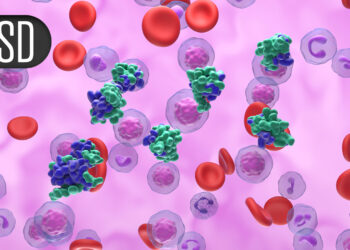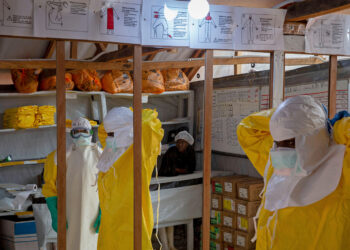TOPLINE:
In patients with relapsing polymyalgia rheumatica, sarilumab with a rapid glucocorticoid taper regimen of 14 weeks led to greater improvements in patient-reported outcomes of health-related quality of life than placebo with a 52-week glucocorticoid taper, especially in those with severe disease activity.
METHODOLOGY:
- Researchers analyzed data from a phase 3, multinational, randomized controlled trial to assess the effects of sarilumab, a fully human monoclonal antibody targeting the interleukin 6 receptor, on patient-reported outcomes in patients with relapsing polymyalgia rheumatica.
- They included 118 patients (mean age, 68.9 years; 69% women; 83% White) who had received at least 8 weeks of glucocorticoid treatment and experienced at least one flare during the glucocorticoid tapering phase, with an erythrocyte sedimentation rate > 30 mm/h or a C-reactive protein level > 10 mg/L in the preceding 12 weeks.
- Patients were randomly assigned to receive either 200 mg subcutaneous sarilumab every 2 weeks with a 14-week glucocorticoid taper (n = 60) or a matching placebo with 52 weeks of glucocorticoid taper (n = 58).
- Several patient-reported outcomes were assessed at baseline and through 52 weeks to evaluate the effect of sarilumab on health-related quality of life using instruments such as the 36-Item Short Form Health Survey (SF-36), the EuroQoL 5-Dimension (EQ-5D) 3-Level questionnaire, and the Patient Global Assessment of Health Visual Analog Scale, among others.
TAKEAWAY:
- At baseline, 73% of patients in the sarilumab group and 74% in the placebo group reported moderate-to-severe fatigue.
- At week 52, the sarilumab group reported greater improvements than the placebo group in SF-36 Physical Component Summary scores (least-squares mean [LSM] difference, 4.78; P = .020) and Mental Component Summary scores (LSM difference, 4.75; P = .030), as well as in EQ-5D utility index scores (LSM difference, 0.13; P = .034).
- Patients with high disease severity at baseline reported significantly greater improvements in some health-related quality-of-life measures at week 52 with sarilumab than with placebo.
- In a post hoc analysis, more patients in the sarilumab group than in the placebo group achieved improvements equal to or greater than the minimum clinically important difference in SF-36 Physical Component Summary scores at 52 weeks (odds ratio, 3.46; P = .020), resulting in a number needed to treat of 3.7.
IN PRACTICE:
“Sarilumab accompanied by an abbreviated 14-week glucocorticoid taper achieved substantially better outcomes than placebo, seemingly more so in patients with more severe disease at baseline,” experts wrote in an accompanying comment.
SOURCE:
This study was led by Vibeke Strand, MD, Stanford University, Palo Alto, California. It was published online on June 19, 2025, in The Lancet Rheumatology.
LIMITATIONS:
This study was terminated prematurely. Detailed psychometric validation of the patient-reported outcomes was absent. No individuals with lived experience were involved at any stage in the study.
DISCLOSURES:
This study was funded by Sanofi and Regeneron Pharmaceuticals. Several authors reported serving as employees and/or holding stocks in the funding companies. Some other authors reported consulting for, receiving grants from, or holding stocks in various pharmaceutical companies including Sanofi, Regeneron Pharmaceuticals, and AbbVie.
This article was created using several editorial tools, including AI, as part of the process. Human editors reviewed this content before publication.
Source link : https://www.medscape.com/viewarticle/sarilumab-improves-quality-life-polymyalgia-rheumatica-2025a1000iea?src=rss
Author :
Publish date : 2025-07-11 08:00:00
Copyright for syndicated content belongs to the linked Source.









